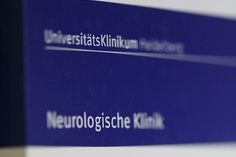-
Molecular Neuroimmunology Group | AG Molekulare Neuroimmunologie
- About us | Über uns
- DONATIONS | SPENDENKONTO
- Staff | Mitarbeiter
- Clincial studies | Klinische Studien
- Multiple sclerosis | Multiple Sklerose
- MOG antibody-associated disease (MOGAD) | MOG-Enzephalomyelitis (MOG-EM)
- Neuromyelitis optica spectrum disorders (NMOSD) / Neuromyelitis-optica-Spektrum-Erkrankungen
- Autoimmune encephalitis and paraneoplastic neurological syndromes / Autoimmunenzephalitiden und paraneoplastische neurologische Syndrome
- COVID-19/SARS-CoV-2 and Post-/Long-COVID | COVID-19/SARS-CoV-2 und Post-/Long-COVID
- Baló's concentric sclerosis (BCS) / Konzentrische Sklerose Baló
- Schilder's myelinoclastic diffuse sclerosis (MDS) | Myelinoklastische diffuse Sklerose (Morbus Schilder)
- History of neuroscience | Geschichte der Neurowissenschaften
- MMN and CIDP | MMN und CIDP
- Neoplasms | Neoplasien
- Neuroinflammation & Degeneration
- DFG Forschergruppe 2289
- Neuroinfectiology
Molecular Neuroimmunology Group | AG Molekulare Neuroimmunologie
OVERVIEW
Our research focuses on exploring the mechanisms underlying the pathogenesis of multiple sclerosis (MS), neuromyelitis optica spectrum disorders (NMOSD), myelin oligodendrocyte glycoprotein (MOG)-IgG-associated encephalomyelitis (MOG-EM; also termed MOG antibody-associated disease, MOGAD) and other antibody-mediated autoimmune diseases. As a long-standing member of the BMBF-supported Clinical Competence Network Multiple Sclerosis (KKNMS), we cooperate closely with other national MS centers and take part in multicenter research projects. The Molecular Neuroimmunology Group is associated with the neuroimmunological outpatient clinic, where patients with MS, NMOSD, MOGAD, myasthenia gravis, autoimmune encephalitis, autoimmune ataxias, and immune neuropathies are seen on a regular basis and where national and international multicenter clinical trials for MS and other neuroimmunological diseases are coordinated. In addition, our group is in charge of the cerebrospinal fluid (CSF) laboratory at the University Hospital Heidelberg and we work on broadening and optimizing the spectrum of diagnostic methods in the field of CSF analysis.
About us
Clinical studies
Multiple sclerosis (MS)
Neuromyelitis optica spectrum disorders (NMOSD)
MOG encephalomyelitis (MOG-EM)
Paraneoplastic and other autoantibody-mediated disorders
COVID-19 and Post/Long-COVID
Baló's concentric sclerosis (BCS)
Schilder's myelinoclastic diffuse sclerosis (MDS)
History of neuroscience
Immune regulation in multiple sclerosis: For many years the group has been interested in aspects of immune regulation in MS involving regulatory T cells (Treg). We have been able to show that Treg isolated from patients with MS harbor reduced numbers of naive cells within circulating effector and Treg subsets, thereby prompting diminished functional Treg activity (Hug J Immunol 2003, Haas Eur J Neurol 2005, Haas J Immunol 2007). A role of premature immunosenescence is strengthened by results showing that (1) CD4+ T cells from MS patients express markedly lower levels of IL-7Rα on their cell surface than those from healthy persons of the same age, thereby affecting frequencies of naive and RTE-Treg and, consequently, Treg function (Haas Eur J Immunol 2011); (2) frequencies of circulating dual-receptor Treg designating cells released from the thymus are reduced in MS (Haas Eur J Immunol 2011); and (3) homeostatic abnormalities are also detectable in pediatric patients (Balint Neurology 2013). In line with this data, patient-derived Treg comprise disproportionately increased numbers of non-inhibitory cells when assessed with regard to their potential to suppress Ca2+ signals in adjacent conventional T cells (Tcon) at the single-cell level (Schwarz J Immunol 2013; see Figure). This distinguishing feature correlates with diminished quantities of naive Treg subtypes. Complementary studies have shown that Treg are not abundant in the inflamed CNS and are prone to pharmacological modulation in the systemic compartment (Fritzsching PLoS One 2011). Further studies focusing on the role of B lymphocytes in MS have revealed that B cells undergo unique compartmentalized redistribution in peripheral blood and cerebrospinal fluid (CSF) during active MS (Haas J Autoimmunity 2011). We recently demonstrated that unique B-cell patterns are present in the CSF of pediatric MS patients. Long-term treatment with disease-modifying agents was found to differentially affect B-cell homeostasis. B-cell diapedesis across the blood-CSF barrier is currently under investigation.
Autoantibodies to aquaporin-4 and myelin-oligodendrocyte glycoprotein in neuromyelitis optica (NMO) and related disorders: NMO is an inflammatory disorder of the CNS of putative autoimmune etiology which mainly affects the optic nerves and spinal cord. In 80% of cases, NMO is associated with pathogenic antibodies (termed NMO-IgG) which target aquaporin-4 (AQP4), the most abundant water channel in the CNS (Jarius Nature Clin Pract Neurol 2008; Jarius Nature Rev Neurol 2010; Nature Rev Neurol 2020; Jarius Nat Rev Dis Prim 2020). In a subset of patients seronegative for AQP4-IgG, antibodies to myelin oligodendrocyte glycoprotein (MOG) have been shown to be involved in the pathogenesis . We have recently systematically analyzed in a multi-center study one of the largest cohorts of patients with MOG-IgG encephalomyelitis (Jarius J Neuroinflammation 2016, 2016, 2016). Previous and ongoing efforts of our group have focused on the development, evaluation and optimization of immunoassays for detecting serum AQP4-IgG and MOG-IgG as well as on elucidating the clinical and pathogenic impact of these autoantibodies in NMO and related disorders (Jarius and Wildemann Nat Rev Neurol 2010; Jarius J Neuroinflammation 2012; Jarius and Wildemann Brain Pathol 2013; Wildemann and Jarius Lancet Neurology 2013). As 10-15% of patients with NMO remain seronegative for NMO-IgG/AQP4-Ab and MOG-EM, we are currently searching for further disease-related autoantibodies and their respective target autoantigens. We were first to confirm AQP4-IgG in NMO (Jarius Neurology 2007), to publish on a recombinant assay suitable for routine testing (Paul*/Jarius*/Aktas* PloSMed 2007), were involved in the first description of MOG-IgG in NMOSD (Mader 2010), have co-developed the currently most frequently applied diagnostic assay for detecting AQP4-IgG (Jarius 2010), and are lead or co-authors of the currently most widely used international diagnostic criteria for MOG-EM and NMOSD (Wingerchuk Neurology 2015; Jarius J Neuroinflammation 2018) and lead authors of the current diagnostic recommendtions of the Neuromyelitis optica Study Group (NEMOS) (Jarius J Neurol 2023).
Autoantibody-associated neurological disorders other than NMO and MOG-EM: The focus of this project is on the diagnostic and pathophysiological role of autoantibodies in disorders of the central and peripheral nervous system other than NMO, including paraneoplastic neurological syndromes, Susac syndrome (a rare microangiopathy of the retina, inner ear and brain), and autoimmune cerebellar ataxia. Our group has recently discovered two novel autoantibodies in patients with autoimmune cerebellar ataxia, limbic encephalitis and peripheral neuropathy targeting the inositol 1,4,5-trisphosphate receptor type 1 (ITPR1-IgG), a key protein in neuronal calcium homoeostasis, the Rho GTPAse-activating proteins 26 (ARHGAP26-IgG), 10 (ARHGAP10-IgG), and 17 (ARHGAP17-IgG), Septin 3, Flotillin, DPPX and synapsin, respectively (e.g. Jarius J Neuroinflammation 2010, 2014, 2023; J Neurol 2022, 2023).
History of neuroscience: This project focuses on the history of neuroscience in the 18th and 19th centuries, with a special interest in neuroimmunological disorders (Jarius and Wildemann British Medical Journal 2012, Brain 2013, J Neuroinflammation 2013, J Neurol 2012, 2013, 2014, 2015, J Neurol Sci 2012, 2015, 2016, Mult Scler 2011, Eur Neurol 2017).
Current work focuses on elucidating the role of the blood-CSF barrier in facilitating the entry of harmful B cells into the CNS in MS, the interaction between Treg and B cells under normal conditions as well as in patients with MS, and on the relevance of MOG-IgG and other antibodies in NMO and MS.
__________
Unsere Forschung konzentriert sich auf die Erforschung der Mechanismen, die der Pathogenese der Multiplen Sklerose (MS), der Neuromyelitis-Optica-Spektrum-Erkrankungen (NMOSD), der Myelin-Oligodendrozyten-Glykoprotein (MOG)-IgG-assoziierten Enzephalomyelitis (MOG-EM; auch als MOG-Antikörper-assoziierte Erkrankung, MOGAD, bezeichnet) und anderen Antikörper-vermittelten Autoimmunerkrankungen zugrunde liegen. Als langjähriges Mitglied des vom BMBF geförderten Klinischen Kompetenznetzes Multiple Sklerose (KKNMS) arbeiten wir eng mit anderen nationalen MS-Zentren zusammen und beteiligen uns an multizentrischen Forschungsprojekten. Der Arbeitsgruppe Molekulare Neuroimmunologie ist die neuroimmunologische Ambulanz angegliedert, in der regelmäßig Patienten mit MS, NMOSD, Myasthenia gravis, Autoimmunataxien und Immunneuropathien behandelt werden und in der nationale und internationale multizentrische klinische Studien zu MS und anderen neuroimmunologischen Erkrankungen koordiniert werden. Darüber hinaus betreut unsere Gruppe das Liquorlabor am Universitätsklinikum Heidelberg und arbeitet an der Erweiterung und Optimierung des diagnostischen Methodenspektrums im Bereich der Liquoranalyse.
Über uns
Klinische Studien
Multiple Sklerose (MS)
Neuromyelitis-optica-Spektrum-Erkrankungen (NMOSD)
MOG-Enzephalomyelitis (MOG-EM, MOGAD)
Paraneoplastische und andere Autoantikörper-vermittelte Erkrankungen
COVID-19 und Post/Long-COVID
Balós konzentrische Sklerose (BCS)
Diffuse myelinoklastische Sklerose Schilder (MDS)
Geschichte der Neurowissenschaften
Immunregulation bei Multipler Sklerose: Seit vielen Jahren ist die Gruppe an Aspekten der Immunregulation bei MS interessiert, die regulatorische T-Zellen (Treg) betreffen. Wir konnten zeigen, dass von MS-Patienten isolierte Treg-Zellen eine reduzierte Anzahl naiver Zellen innerhalb der zirkulierenden Effektor- und Treg-Untergruppen aufweisen, was zu einer verminderten funktionellen Treg-Aktivität führt (Hug J Immunol 2003, Haas Eur J Neurol 2005, Haas J Immunol 2007). Eine Rolle der vorzeitigen Immunoseneszenz wird durch Ergebnisse gestärkt, die zeigen, dass (1) CD4+ T-Zellen von MS-Patienten deutlich geringere Mengen an IL-7Rα auf ihrer Zelloberfläche exprimieren als die von gesunden Personen gleichen Alters, was sich auf die Häufigkeit von naiven und RTE-Tregs und folglich auf die Treg-Funktion auswirkt (Haas Eur J Immunol 2011); (2) die Häufigkeit der zirkulierenden "dual-receptor" Treg-Zellen, die vom Thymus freigesetzt werden, ist bei MS reduziert (Haas Eur J Immunol 2011); und (3) homöostatische Anomalien sind auch bei pädiatrischen Patienten nachweisbar (Balint Neurology 2013). In Übereinstimmung mit diesen Daten weisen von Patienten stammende Treg eine unverhältnismäßig hohe Anzahl nicht-inhibitorischer Zellen auf, wenn sie im Hinblick auf ihr Potenzial zur Unterdrückung von Ca2+-Signalen in benachbarten konventionellen T-Zellen (Tcon) auf Einzelzellebene bewertet werden (Schwarz J Immunol 2013; siehe Abbildung). Dieses unterscheidende Merkmal korreliert mit verminderten Mengen naiver Treg-Subtypen. Ergänzende Studien haben gezeigt, dass Tregs im entzündeten ZNS nicht vermehrt sind und im systemischen Kompartiment pharmakologisch moduliert werden können (Fritzsching PLoS One 2011). Weitere Studien, die sich auf die Rolle der B-Lymphozyten bei MS konzentrieren, haben gezeigt, dass B-Zellen bei aktiver MS eine einzigartige kompartimentierte Umverteilung im peripheren Blut und im Liquor (CSF) erfahren (Haas J Autoimmunity 2011). Wir haben kürzlich gezeigt, dass im Liquor von pädiatrischen MS-Patienten einzigartige B-Zell-Muster vorhanden sind. Es wurde festgestellt, dass eine Langzeitbehandlung mit krankheitsmodifizierenden Medikamenten die B-Zell-Homöostase in unterschiedlicher Weise beeinflusst. Die Diapedese von B-Zellen über die Blut-Liquor-Schranke wird derzeit untersucht.
Autoantikörper gegen Aquaporin-4 und Myelin-Oligodendrozyten-Glykoprotein bei Neuromyelitis optica (NMO) und verwandten Erkrankungen: NMOSD ist eine entzündliche Erkrankung des ZNS mit vermutlich autoimmuner Ätiologie, die hauptsächlich die Sehnerven und das Rückenmark betrifft. In 80 % der Fälle ist die NMOSD mit pathogenen Antikörpern (NMO-IgG) assoziiert, die sich gegen Aquaporin-4 (AQP4) richten, den im ZNS am häufigsten vorkommenden Wasserkanal (Jarius Nature Clin Pract Neurol 2008; Jarius Nature Rev Neurol 2010; Nature Rev Neurol 2020; Jarius Nature Reviews Disease Primers 2020). Bei einer Untergruppe von Patienten, die seronegativ für AQP4-IgG sind, hat sich gezeigt, dass Antikörper gegen Myelin-Oligodendrozyten-Glykoprotein (MOG) an der Pathogenese beteiligt sind . Wir haben u.a. in zwei vielzitierten multizentrischen Studien die bis dahin größten Kohorten von Patienten mit NMOSD und MOG-IgG-Enzephalomyelitis (MOG-EM) systematisch ausgewertet (Jarius J Neuroinflammation 2012, 2016a, 2016b, 2016c). Frühere und gegenwärtige Projekte konzentrierten sich auf die Entwicklung, Evaluierung und Optimierung von Immunoassays zum Nachweis von AQP4-IgG und MOG-IgG in Serum und Liquor sowie auf die Untersuchung der klinischen und pathogenetischen Bedeutung dieser Autoantikörper bei NMOSD und verwandten Erkrankungen (Jarius und Wildemann Nat Rev Neurol 2010; Jarius J Neuroinflammation 2012; Jarius und Wildemann Brain Pathol 2013; Wildemann und Jarius Lancet Neurology 2013; Jarius Nature Reviews Disease Primers 2021). Da 10-15% der Patienten mit NMO seronegativ für NMO-IgG/AQP4-Ab und MOG-EM bleiben, suchen wir derzeit nach weiteren krankheitsbezogenen Autoantikörpern und ihren jeweiligen Zielautoantigenen. Wir sind Lead- bzw. Ko-Autoren der international derzeit meistgenutzten diagnostischen Kriterien für MOG-EM und NMOSD (Wingerchuk Neurology 2015; Jarius J Neuroinflammation 2018) und Lead-Autoren der aktuellen Empfehlungen der Neuromyelitisoptica-Studiengruppe (NEMOS) zur Diagnostik der Neuromyelitis-optica-Spektrum-Erkrankungen (Jarius J Neurol 2023).
Andere Autoantikörper-assoziierte neurologische Erkrankungen: Der Schwerpunkt dieses Projekts liegt auf der diagnostischen und pathophysiologischen Rolle von Autoantikörpern bei anderen Erkrankungen des zentralen und peripheren Nervensystems als NMOSD und MOGAD, darunter paraneoplastische neurologische Syndrome, das Susac-Syndrom (eine seltene Mikroangiopathie der Netzhaut, des Innenohrs und des Gehirns), Autoimmunenzephalitiden und die autoimmune Kleinhirnataxie. Unsere Gruppe hat mehrere neue Autoantikörper bei Patienten mit autoimmuner zerebellärer Ataxie, limbischer Enzephalitis und peripherer Neuropathie entdeckt bzw. mitbeschrieben, die u.a. gegen den Inositol-1,4,5-Trisphosphat-Rezeptor Typ 1 (ITPR1-IgG), ein Schlüsselprotein der neuronalen Kalzium-Homöostase, die Rho GTPAse-aktivierenden Proteine 26 (ARHGAP26-IgG), 10 (ARHGAP10-IgG) und 17 (ARHGAP17-IgG), Septin-3, Flotillin, DPPX oder Synapsin gerichtet sind (u.a. Jarius J Neuroinflammation 2010, 2014, 2023; J Neurol 2022, 2023).
Geschichte der Neurowissenschaften: Dieses Projekt konzentriert sich auf die Geschichte der Neurowissenschaften im 18. und 19. Jahrhundert, mit besonderen Interesse an der Geschichte der Neuroimmunologie (u.a. Jarius und Wildemann British Medical Journal 2012, Brain 2013, J Neuroinflammation 2013, J Neurol 2012, 2013, 2014, 2015, J Neurol Sci 2012, 2015, 2016, Mult Scler 2011, Eur Neurol 2017).
Aktuelle Arbeiten konzentrieren sich auf die Aufklärung der Rolle der Blut-Liquor-Schranke beim Übertritts schädlicher B-Zellen in das ZNS bei MS, die Interaktion zwischen Treg- und B-Zellen unter normalen Bedingungen sowie bei Patienten mit MS und auf die Bedeutung von MOG-IgG und anderen Antikörpern bei NMO und MS.


SELECTED PUBLICATIONS
Jarius S, Paul F, Weinshenker BG, Levy M, Kim HJ, Wildemann B. Neuromyelitis optica. Nature Rev Dis Primers. 2020 Oct 22;6(1):85.
Haas J, Bekeredjian-Ding I, Milkova M, Balint B, Schwarz A, Korporal M, Jarius S, Fritz B, Lorenz HM, Wildemann B. B cells undergo unique compartmentalized redistribution in multiple sclerosis. J Autoimmun. 2011;37:289-99
Jarius S, Scharf M, Begemann N, Stocker W, Probst C, Serysheva II, Nagel S, Graus F, Psimaras D, Komorowski L, Wildemann B: Antibodies to the inositol 1,4,5-trisphosphate receptor type 1 (ITPR1) in cerebellar ataxia. J Neuroinflammation. 2014;11:206
Wildemann B, Jarius S. The expanding range of autoimmune disorders of the nervous system. Lancet Neurol. 2013;12(1):22-4
Dörr J, Krautwald S, Wildemann B, Jarius S, Ringelstein M, Duning T, Aktas O, Ringelstein EB, Paul F, Kleffner I. Characteristics of Susac syndrome: a review of all reported cases. Nat Rev Neurol. Nature Rev Neurol. 2013;9(6):307-16
Jarius S, Wildemann B: AQP4 antibodies in neuromyelitis optica: diagnostic and pathogenetic relevance. Nature Rev Neurol. 2010;6:383-92.
-
Molecular Neuroimmunology Group | AG Molekulare Neuroimmunologie
- About us | Über uns
- DONATIONS | SPENDENKONTO
- Staff | Mitarbeiter
- Clincial studies | Klinische Studien
- Multiple sclerosis | Multiple Sklerose
- MOG antibody-associated disease (MOGAD) | MOG-Enzephalomyelitis (MOG-EM)
- Neuromyelitis optica spectrum disorders (NMOSD) / Neuromyelitis-optica-Spektrum-Erkrankungen
- Autoimmune encephalitis and paraneoplastic neurological syndromes / Autoimmunenzephalitiden und paraneoplastische neurologische Syndrome
- COVID-19/SARS-CoV-2 and Post-/Long-COVID | COVID-19/SARS-CoV-2 und Post-/Long-COVID
- Baló's concentric sclerosis (BCS) / Konzentrische Sklerose Baló
- Schilder's myelinoclastic diffuse sclerosis (MDS) | Myelinoklastische diffuse Sklerose (Morbus Schilder)
- History of neuroscience | Geschichte der Neurowissenschaften
- MMN and CIDP | MMN und CIDP
- Neoplasms | Neoplasien
- Neuroinflammation & Degeneration
- DFG Forschergruppe 2289
- Neuroinfectiology
Arbeitsgruppenleiterin







